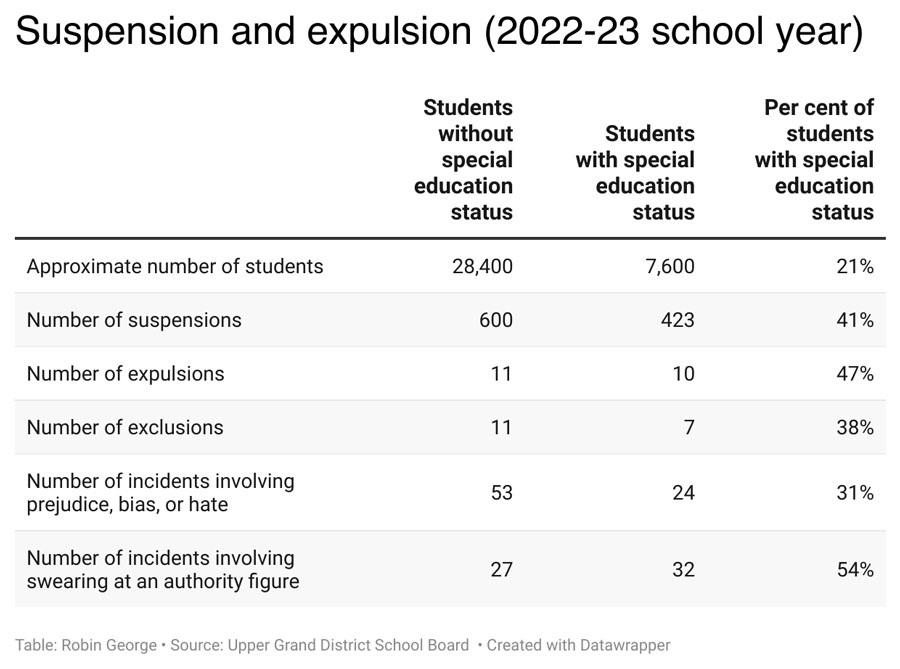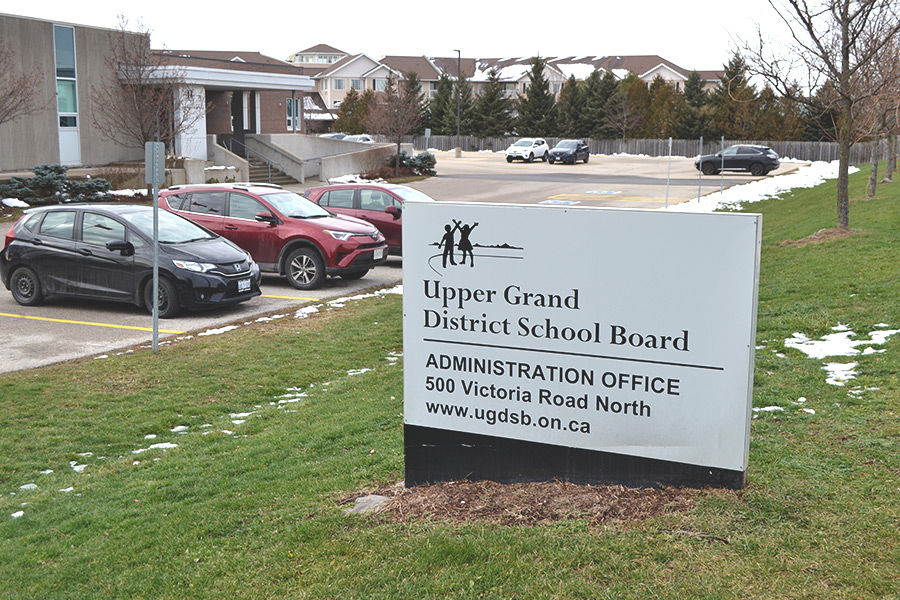GUELPH – Students with special education status are disproportionately expelled, suspended and excluded from Upper Grand District School Board (UGDSB) classrooms.
That’s according to data for the 2022-23 school year that compares the rates of expulsion, suspension and exclusion (ESE) for students with and without individual education plans (IEPs).
An analysis of this data was presented to the special education advisory committee by the board’s academic achievement data analyst Blayne Primeau on Oct. 11.
The Advertiser requested the numbers that informed the analysis several times in the following month, but no one from the UGDSB would provide the data. Communications manager Heather Loney said this is because the UGDSB has a general practice of sharing information with trustees before making it available to the public.
In December the Advertiser submitted a freedom of information request, after which the UGDSB provided the requested data on Jan. 15.
Students with special education status have IEPs: written plans describing the accommodations, services and programs in place for the student.
Students with special education status include students with physical, learning and developmental disabilities, students with speech and language impairments, and students who are autistic, deaf, hard of hearing, blind or have low vision.
While students with special education status make up 21 per cent of UGDSB students, they make up 41% of students expelled, suspended or excluded last year.

Students with special education status at the UGDSB are more likely to be suspended, expelled, or excluded than other students. Table by Robin George
Expulsion, suspension and exclusion
Board-wide, there were 1,648 expulsions, suspensions and exclusions.
UGDSB policies define two types of expulsion: school expulsion and board expulsion.
When a student faces school expulsion, they are prohibited from returning to the school they were attending at the time of the incident that led to their expulsion, but they may attend another school within the board.
There were 21 expulsions in the UGDSB last year, and 10 of them involved students with special education status.
Suspension is when a student is prohibited from attending their school for a period of time. There were 1,023 suspensions last year, and 423 involved students with special education status.
According to UGDSB and provincial policies, expulsions and suspensions are part of a continuum of progressive discipline responses.
Exclusion is when a student is excluded from attending school for a limited amount of time to safeguard the physical or mental well-being of students. Unlike expulsion and suspension, exclusion is not a disciplinary measure.
The board excluded students on 18 occasions last year, with seven of them involving students with IEPs.
The four most common reasons for ESE overall are:
- persistent opposition to authority;
- serious breach of code of conduct;
- fighting/violence; and
- incidents motivated by prejudice, bias and hate.
For students without special education status, 8% of incidents involve prejudice, bias or hate, while for students with special education status it’s 5%.
For students with special education status, 7% of incidents involve swearing at an authority figure, while for students without special education status it’s 4%.
‘Where is the board taking this information?’
At the October meeting parent Maren Vsetula noted the trends were “not a huge shocker,” and enquired about next steps. “Where is the board taking this information?” Vsetula asked.
Primeau said he hopes the data “leads to better questions.
“How can we look at this from a different perspective and different ways to get to the place where we can have some actionable evidence as a board to make a change or a tweak?”
Superintendent of education Wendy Donaldson noted the data “is coming to you quite hot off the press.”
Now, there’s an opportunity to look at the data with school administrators, she continued, and for the special education department to take note of the trends and consider what interventions and shifts can be made, as is done with data from EQAO testing.
She said the committee could expect to continue talking about next steps at future meetings.
Donaldson encouraged everyone to reflect on the data and the questions that arise from it, and bring those questions back to the committee so members can work together to “deconstruct what this might mean, for the purpose of identifying gaps and then improving practice within the system.”
Trustee Laurie Whyte asked how many of the incidents of ESE were repeat students – “the same students, repeatedly over the same year, or year to year?”
And “if we have a student that is repeatedly [expelled, suspended or excluded] how do we catch that sooner?
“Those are questions that trustees always have as we are sitting around the table at our disciplinary hearings,” she continued – “why is this student coming to us at this level now – why was this not caught three years ago, or four years ago, or earlier this year?”
Though the committee did not have ready answers for Whyte, she welcomed the information and said “moving forward, it’s important to see what comes out of it.”




